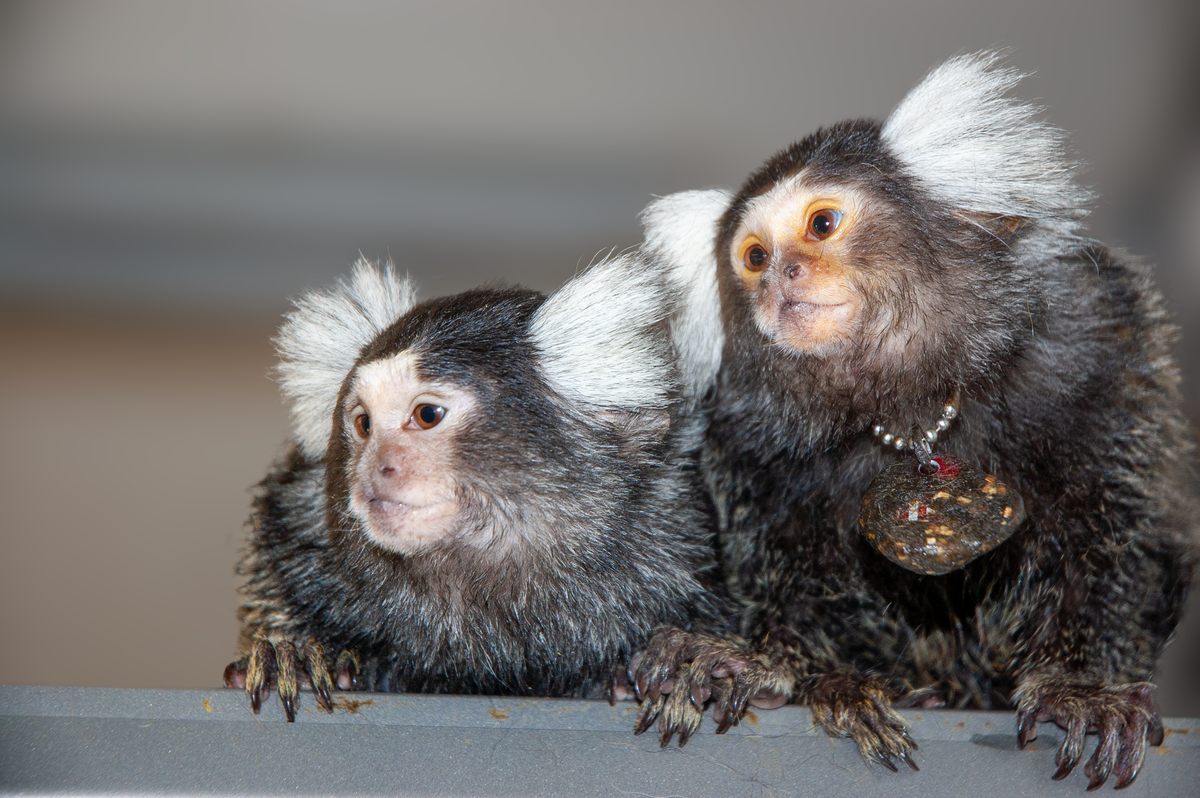
Your support helps us to tell the story
Much like humans call each other by their names, researchers say marmosets address different individuals with specific, high-pitched calls.
The monkeys use what are known as “phee-calls” — calls that sound like a screech or a whistle — to identify each other, according to new research published in the journal Science.
The discovery of these calls make marmosets the first nonhuman primates known to use name-like vocal labels for members of their species. Previously, similar behavior had been identified in dolphins and elephants.
“This discovery highlights the complexity of social communication among marmosets,” lead study author Dr. David Omer, of Jerusalem’s Hebrew University, and the Edmond & Lily Safra Center for Brain Sciences, said in a release provided by the university. “These calls are not just used for self-localization, as previously thought— marmosets use these specific calls to label and address specific individuals.”
The discovery, the university said, provides a window into how complex marmosets’ social communication methods are and suggests the animals have developed “complex brain mechanisms” that are potentially comparable to those that gave rise to the evolution of human language. The authors hope that more research will be done in that area.
After recording conversations between pairs of marmosets and interactions between monkeys and a computer system, the study authors also found that the primates could understand when a call was being made to them. When played the recordings, they were more likely to respond to phee-calls that contained their “names.”
In a family of marmosets, members use similar-sounding labels to address others, and there are differences in the names used by each specific family group, resembling the way humans use names and dialects, according to the researchers.
Even adult marmosets who weren’t blood relations appeared able to learn names, including both the similar-sounding labels for individuals and the particular form of speech they’ve gleaned from others in their family group. Two-thirds of the groups in the study were monkeys that were not biologically related, according to The New York Times.
“Marmosets live in small monogamous family groups and take care of their young together, much like humans do,” Omer noted. “These similarities suggest that they faced comparable evolutionary social challenges to our early pre-linguistic ancestors, which might have led them to develop similar communicating methods.”
The researchers believe that this ability to use “names” may have evolved to help marmosets stay connected in the dense tropical rainforests of South America and Central America, where they’re commonly found. Many species are considered to be vulnerable or near-threatened, while only a few are endangered.
In June, researchers said that African elephants call each other and respond to individual names with low rumbles across the savanna. Dolphins also use a name-like whistle, which was discovered decades ago, according to Science. A 2013 analysis examining hundreds of whistles from wild bottlenose dolphins confirmed that they can actually “name” each other.
!["[T]he First and Fifth Amendments Require ICE to Provide Information About the Whereabouts of a Detained Person"](https://images.inkl.com/s3/publisher/cover/212/reason-cover.png?w=600)






